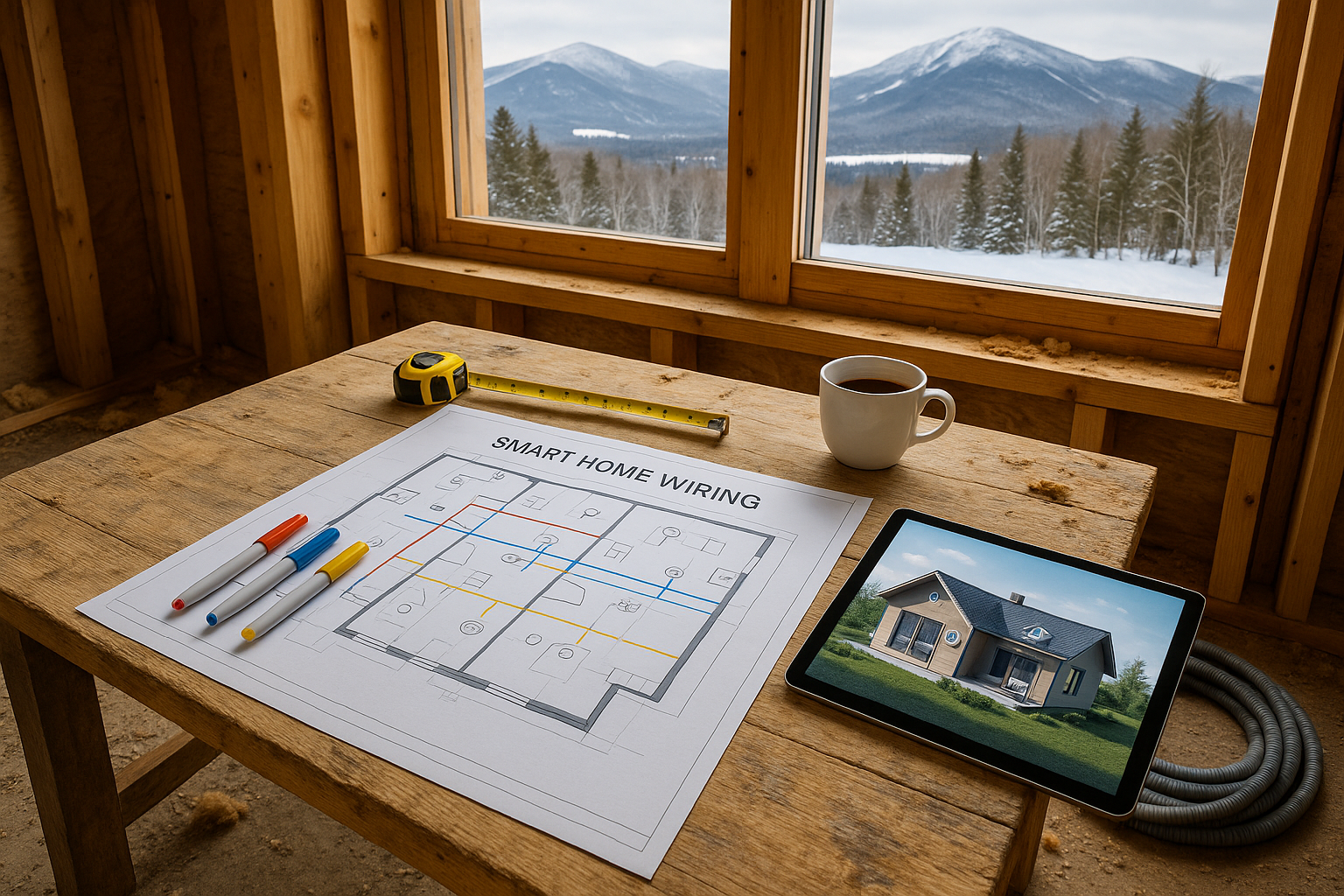Introduction
Building a new home in Vermont? Future-proofing it with the right smart home wiring can save you thousands down the line. From security to lighting to whole-home audio, prewiring ensures your home is ready for today’s tech—and tomorrow’s.
What is Smart Home Wiring?
Smart home wiring refers to the structured low-voltage cabling installed during construction to support connected devices and systems. This includes Cat6 data wiring, coaxial cables, speaker wires, and sensor lines that allow seamless integration of Wi-Fi, cameras, thermostats, and automation features.
Why It Matters (Locally and Technologically)
Smart wiring is no longer a luxury—it’s a standard for energy-efficient, high-performance homes. In Vermont, where many homes are second homes or vacation rentals, automation allows for remote management of heat, lighting, and security. With our snowy winters and rural gaps in service, reliable smart systems offer peace of mind and convenience.
Real-World Relevance in Vermont (Especially Stowe & Beyond)
In towns like Stowe, Waterbury, and Montpelier, we regularly see smart wiring used to:
- Control lighting from an app or voice assistant
- Manage heat pumps and radiant floor systems remotely
- Stream 4K content without Wi-Fi drops
- Monitor driveways and doors with smart cameras
- Support hybrid work with wired Ethernet in home offices
These systems make homes safer, more efficient, and more enjoyable.
How It Works / Key Features
Smart home prewiring is done before the drywall goes up. Here’s a breakdown:
- Planning: Decide which rooms need data, audio, or control access
- Routing: Run Cat6 for data, RG6 for TV, 16/2 or 14/2 for speakers, etc.
- Home Run: All cables land in a structured media panel, like a brain center
- Label & Test: Each line is labeled, documented, and tested for quality
- Future-Proofing: Empty conduit or smurf tubing allows for easy upgrades later
What to Look for in a Contractor or Solution
Not all wiring jobs are created equal. Look for:
- Experience in structured cabling and smart home integration
- Use of shielded or plenum-rated cables for safety and performance
- Proper labeling and documentation for future servicing
- Guarantees that wiring supports Gigabit+ internet and future tech
Low Voltage Consulting offers all of the above—plus honest guidance and local support.
Conclusion / Call to Action
Smart home wiring is one of the best investments you can make in a new build. Let’s plan it right, right from the start. Contact us for a free consultation—especially before insulation or drywall begins!
🧠 Frequently Asked Questions (FAQ)
❓ Do I need smart wiring if I have Wi-Fi?
✔️ Answer:
Yes. Hardwiring key devices like TVs, gaming consoles, office computers, and security cameras ensures faster speeds, less interference, and greater reliability than relying solely on Wi-Fi.
❓ What if I’m unsure about what smart devices I’ll want in the future?
✔️ Answer:
That’s completely normal. We recommend installing empty conduit (also called “future tubes”) in key areas like media walls and ceilings. This allows you to easily pull new wires later without tearing into walls.
❓ Can smart home wiring be added after the house is built?
✔️ Answer:
It can—but it’s more complex and costly. Prewiring during new construction saves significant time, labor, and mess. Plus, you can future-proof your home with minimal extra cost up front.
❓ Is smart home wiring only for luxury homes?
✔️ Answer:
Not at all. Smart wiring supports essential systems like security, energy management, and reliable work-from-home connections—benefits that apply to homes of all sizes and budgets.
